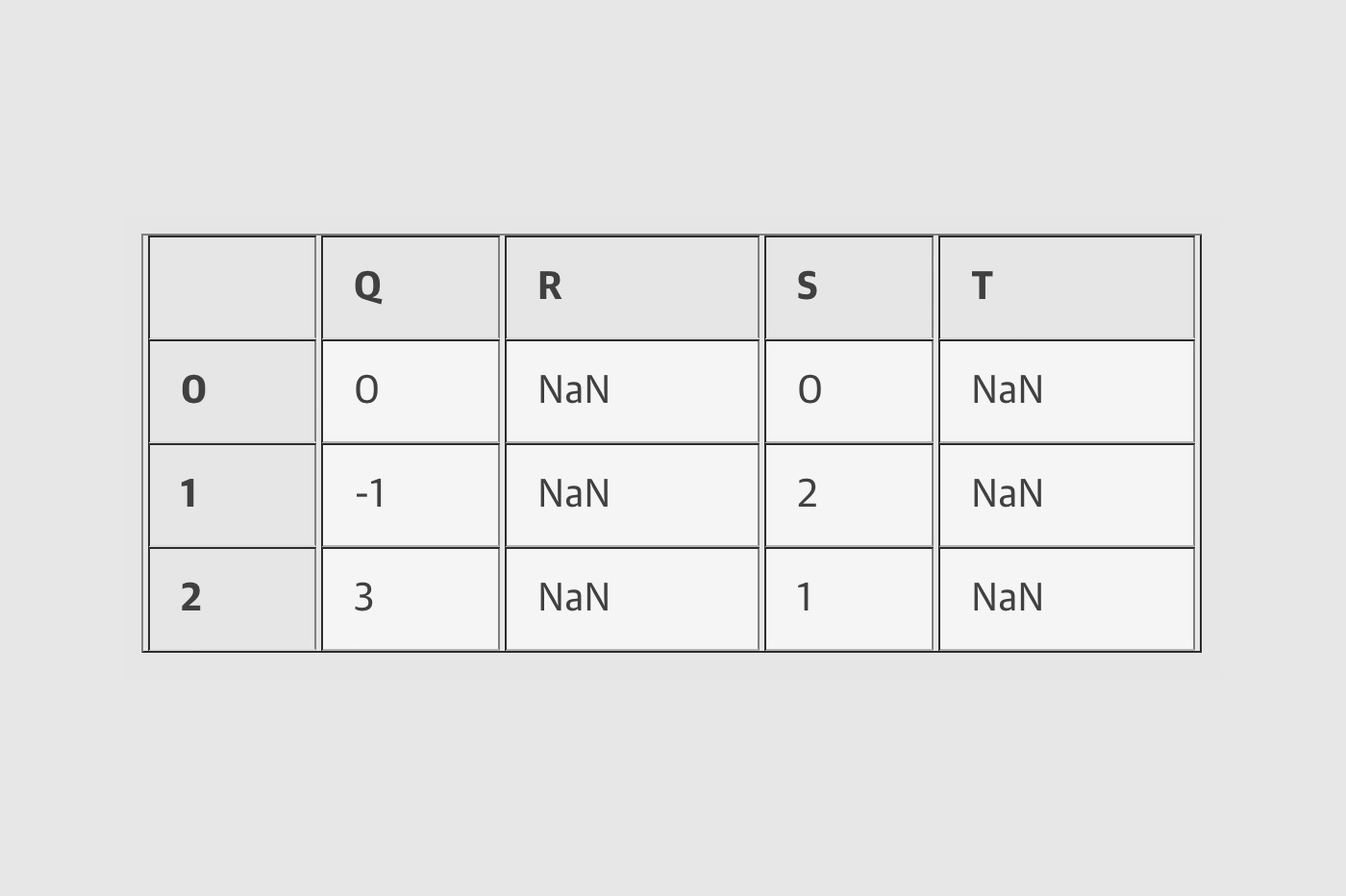Pandas Multiply Matrix With Vector
Df pdDataFrame 0 1 -2 -1 1 1 1 1 s pdSeries 1 1 2 1 dfdots 0 -4 1 5 dtype. And the right-hand side is the constant b.
However it is not as efficient as vectorizing the multiplication with NumPy.

Pandas multiply matrix with vector. Among flexible wrappers add sub mul div mod pow. The dot method for Series computes the inner product instead of the matrix product here. Up to 5 cash back Load library import numpy as np Create matrix matrix nparray1 2 3 4 5 6 7 8 9 Create function that adds 100 to something add_100 lambda i.
Scalar multiplication can be represented by multiplying a scalar quantity by all the elements in the vector matrix. NumPy Matrix Vector Multiplication With the numpymatmul Method. Multiplication vectorized and not vectorized.
Mul other axis columns level None fill_value None source Get Multiplication of dataframe and other element-wise binary operator mul. The numpymatmul method is used to calculate the product of two matrices. The vector x contains the variables x 1 and x 2.
The shape of the resulting matrix will be 3x3 because we are doing 3 dot product operations for each row of A and A has 3 rows. For instance we can multiply a 3x2 matrix with a 2x3 matrix. When two matrices one with columns i and rows j and another with columns j and rows k are multiplied - j elements of the rows of matrix one are multiplied with the j elements of the columns of the matrix two and added to create a value in the resultant matrix.
In math terms we say we can multiply an m n matrix A by an n p matrix B. If p happened to be 1 then B would be an n 1 column vector and wed be back to the matrix-vector product The product A B is an m p matrix which well call C ie A B C. Matrix A n x m Matrix B.
If we want to perform matrix multiplication with two numpy arrays ndarray we have to use the dot product. On a practical side even if the principle of index matching couldnt be strictly followed during a matrix multiplication Pandas could still try to set the right keys afterwards. Python code explaining Scalar Multiplication.
Among flexible wrappers add sub mul div mod pow to. Multiply other axis columns level None fill_value None source Get Multiplication of dataframe and other element-wise binary operator mul. An easy way to determine the shape of the resulting matrix is to take the number of rows from the first one and the number of columns from the second one.
A 2 1 x x 1 x 2 b. Here we multiply a DataFrame with a Series. To calculate the product of two matrices the column number of the first matrix must be equal to the row number of the second matrix.
I 100 Create vectorized function vectorized_add_100 npvectorizeadd_100 Apply function to all elements in matrix vectorized_add_100matrix. Equivalent to dataframe other but with support to substitute a fill_value for missing data in one of the inputsWith reverse version rmul. The dot method of pandas DataFrame class does a matrix multiplication between a DataFrame and another DataFrame a pandas Series or a Python sequence and returns the resultant matrix.
The following picture illustrates it further. A 1 2 3 4 5 b 6 7 8 9 10 x y for x y in zipa b 6 14 24 36 50 This is fine for smaller data. Equivalent to dataframe other but with support to substitute a fill_value for missing data in one of the inputsWith reverse version rmul.
The resultant matrix will be a 31 vector calculated as shown below. The product of a l x m-matrix A a ij i1l j 1m and an m x n-matrix B b ij i1m j 1n is a matrix C c ij i1l j 1n which is calculated like this. In Python we can multiply two sequences with a list comprehension.
Eryk Lewinson in Towards Data Science. But my point of view is that without matrix multiplication which is a basic operation you just cannot make a lot of algorithms. Heres a more comprehensive and notational form of a dot product between a matrix and a vector if I am multiplying matrix A 32 with a vector B21.
9 Useful Pandas Methods You Might Have Not Heard About. V nparray. The numpymatmul method takes the matrices as input parameters and returns the product in the form of another matrix.
You then simply have to multiply element-wise the two matrices by either using Anew_B or npmultiplyAnew_B. Import numpy as np. To summarise A will be a matrix of dimensions m n containing scalars multiplying these variables here x 1 is multiplied by 2 and x 2 by -1.
Import matplotlibpyplot as plt. New_b nparraylistnppadB-i if i 0 else Bi0 constant for i in rangelenBTlenAlenA printnew_b array1 0 0 2 1 0 3 2 1 printnew_bA array 1 0 0 6 4 0 18 14 8.
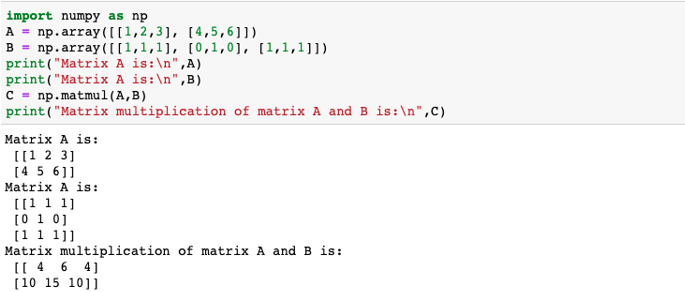
Matrix Multiplication In Numpy Different Types Of Matrix Multiplication

Python Pandas Dataframe Tutorialspoint Dev
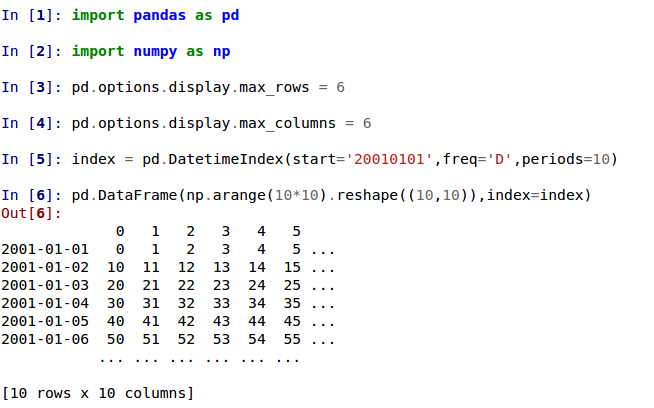
What S New Pandas 0 14 0 Documentation
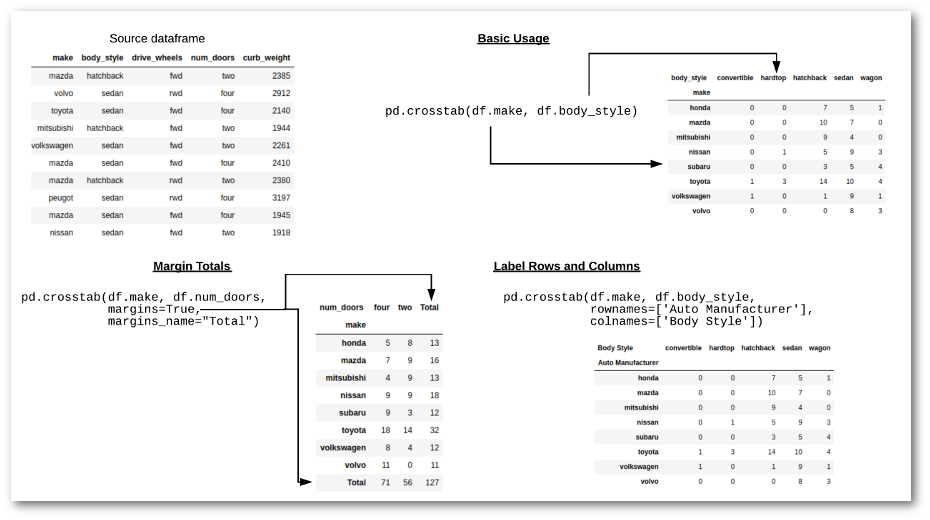
Pandas Crosstab Explained Practical Business Python
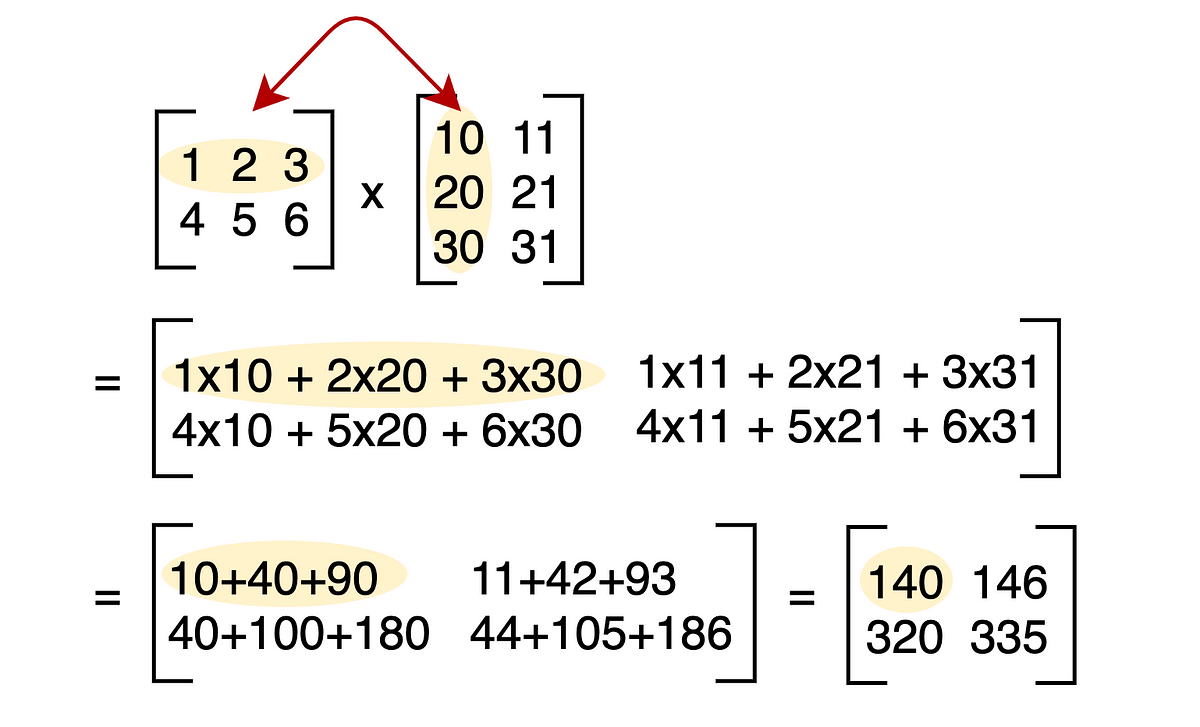
A Complete Beginners Guide To Matrix Multiplication For Data Science With Python Numpy By Chris The Data Guy Towards Data Science

Matrix Array Multiplication What S Excel Doing Mmult And How To Mimic It In Pandas Stack Overflow
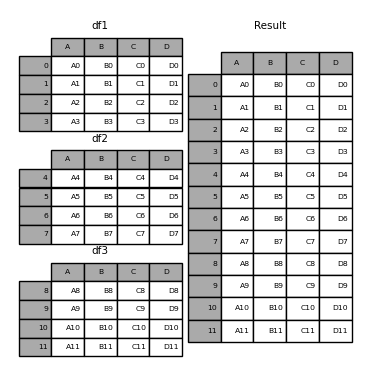
Merge Join Concatenate And Compare Pandas 1 4 0 Dev0 120 G12513c4cdb Documentation

Python Pandas Series Geeksforgeeks

One Word Of Code To Stop Using Pandas So Slowly Coding Data Science One Word

How To Make Boxplots In Python With Pandas And Seaborn Python R And Linux Tips Python How To Make Sas Programming
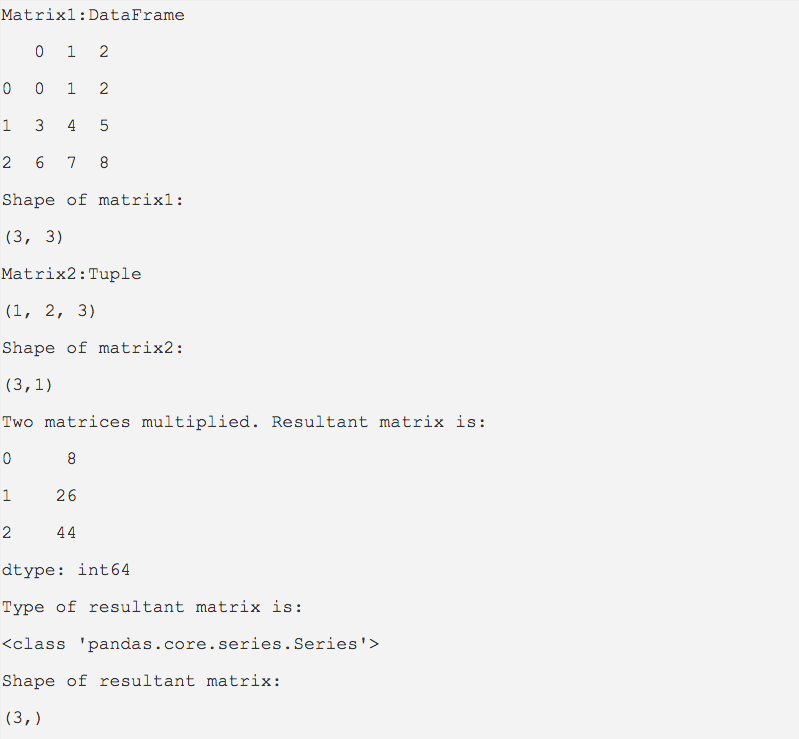
Matrix Multiplication Using Pandas Dataframes Pythontic Com

Python Pandas Dataframe Mul Geeksforgeeks
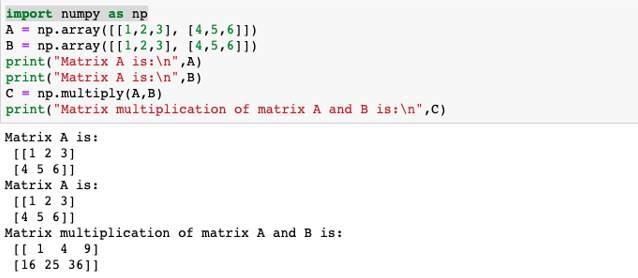
Matrix Multiplication In Numpy Different Types Of Matrix Multiplication

How To Get Rid Of Pandas Converting Large Numbers In Excel Sheet To Exponential Stack Overflow
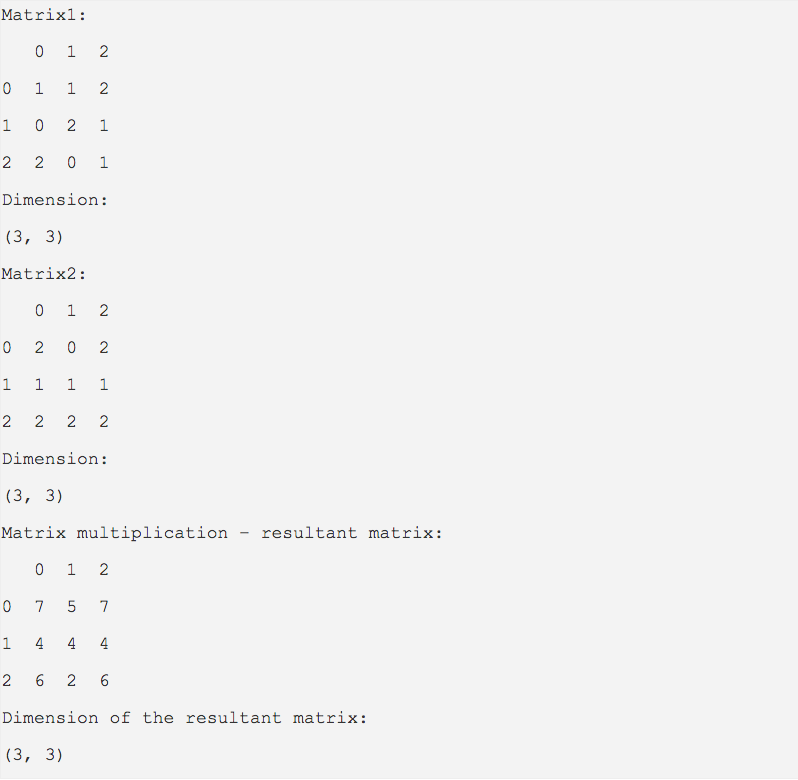
Matrix Multiplication Using Pandas Dataframes Pythontic Com
Learning Programming How To Iterate Over Rows In A Dataframe In Pandas Quora
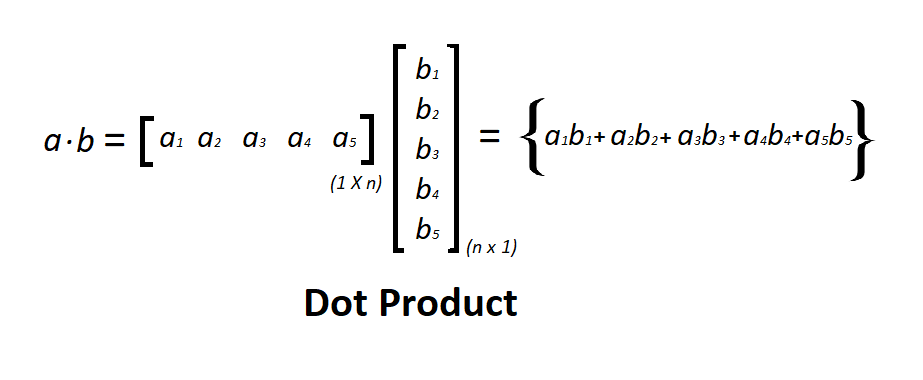
Vectorization In Python Geeksforgeeks

Constructing A Co Occurrence Matrix In Python Pandas Stack Overflow

